Good developer documentation is crucial for any software product or project, yet it’s often overlooked.
Without proper documentation, developers can struggle to understand how a system works, which can lead to confusion, errors, and wasted time.
In other words, understanding what good documentation entails can help you achieve more success with your software.
In this article, we’ll explore the reasons why good developer documentation is so important.
If you’re looking for answers, we have them.
Let’s get started!
Fostering a Documentation Culture
Developer documentation is one of those things that developers often find very helpful but rarely enjoy creating.
The helpfulness of the documentation is not surprising. Developer documentation is a repository of valuable knowledge that can make developers’ work easier and more efficient.
For example, not only do developers find value in code documentation, but they also want the documentation to parse the reasons why the code does what it does.

Source: Twitter
However, the participation of developers in creating the documentation is another story entirely.
Developers often prefer writing code to documenting how the code works, why it works, what the best practices are, and other elements of quality developer documentation.
For instance, that’s the experience of James Scott, a senior technical writer at Google.
Most programmers don’t like writing documentation, it’s just a fact.
As he points out, in some teams he worked in, writing documentation was treated as an annoying task that got delayed to the last minute or even forgotten altogether.
But having good developer documentation still brings many benefits to developers, some of which we’ve mentioned earlier.
When they are able to do their job more efficiently and have all the necessary information easily accessible, the whole company profits from that.
And when developers realize how much easier it is to work when they have great documentation at their disposal, they’ll participate more in creating it, fostering a documentation culture.
As Paulo André, an experienced leadership coach, explains, developers need to see how valuable the documentation is to them.
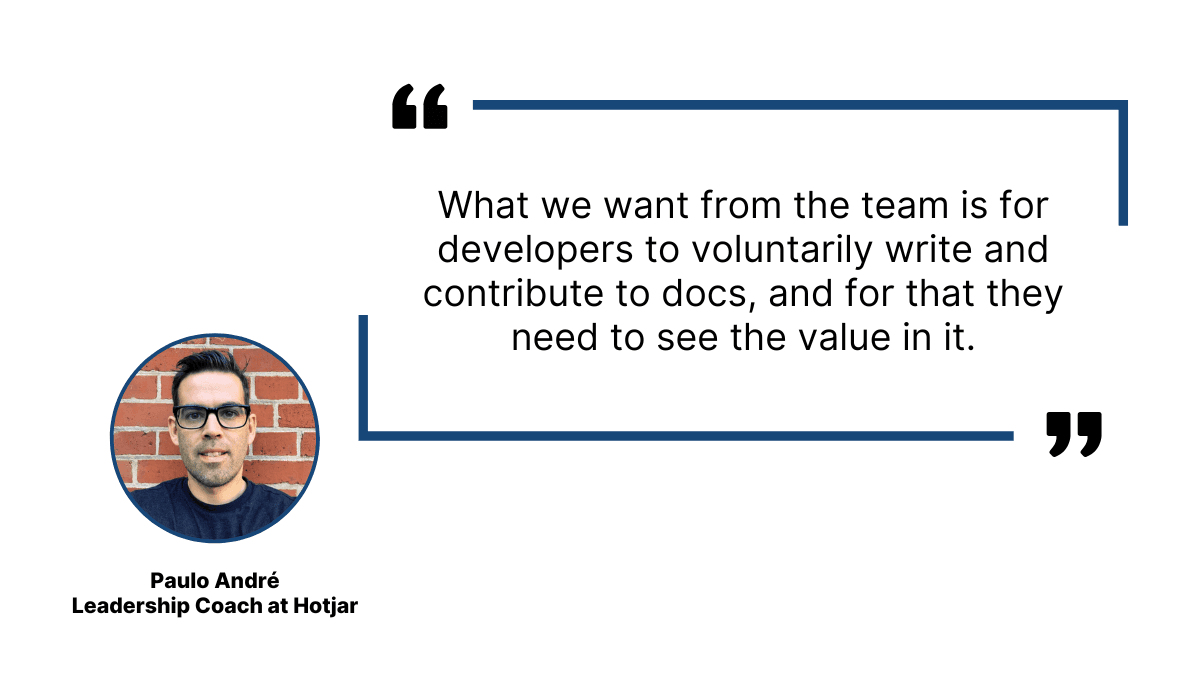
Illustration: Archbee / Data: DX
And if they realize the value of documentation, the chances of them participating in creating the docs are higher.
After all, why wouldn’t they want to create a resource that makes their life easier?
Therefore, creating good developer documentation and fostering a documentation culture are two elements that strengthen each other.
If you provide your developers with great documentation, they’ll quickly see how useful and valuable it is for their everyday work.
Furthermore, when they realize that value, they’ll participate in creating it themselves more readily.
And when you reach that point, you’ll know that you have a thriving documentation culture in your company.
Providing a Single Source of Truth
It’s safe to say that no one likes to spend time searching for information they desperately need to do their work.
Regardless of the industry you work in, if you can’t find the information necessary to do your work properly, that will lead to unhappiness and frustration.
For example, the data from the Panopto report indicates that very thing.

Illustration: Archbee / Data: Panopto
There’s no reason to think that software developers are any different in that regard.
Being able to access any piece of information quickly is non-negotiable for developers to be productive and achieve stellar results.
Luckily, reliable developer documentation provides the knowledge developers need.
What is also important is that it holds all that knowledge in one place, so devs don’t need to rummage through multiple files, cloud drives, or even physical hard drives.
Developer documentation is a single source of truth for developers, and that’s one of its biggest advantages because it avoids forming information silos, also known as knowledge silos.
If you need a refresher on what those silos are, below is a depiction of how they work.
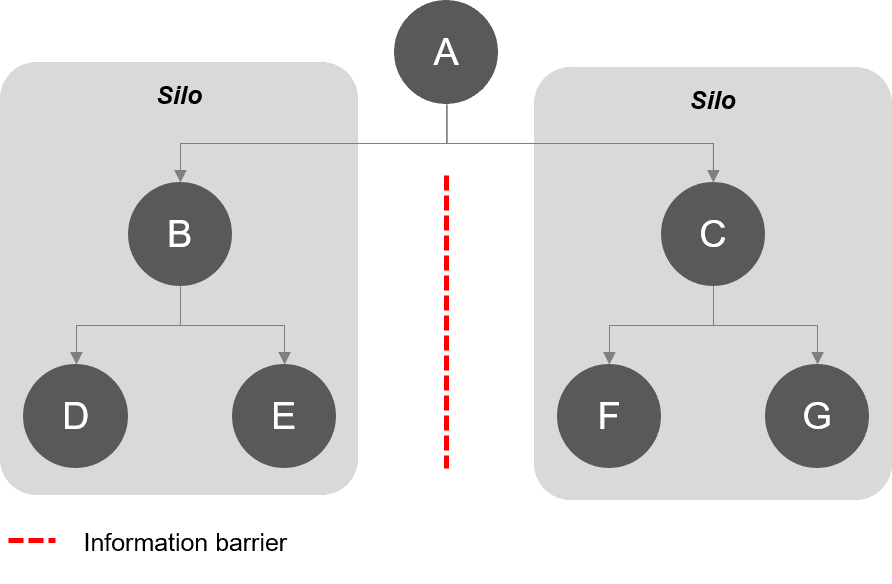
Source: Wikipedia
In essence, information silos in IT describe isolated departments that don’t exchange information, communicate, or collaborate.
According to a Stack Overflow survey, knowledge silos are fairly common in the software development world—68% of developers encounter them at least once a week.
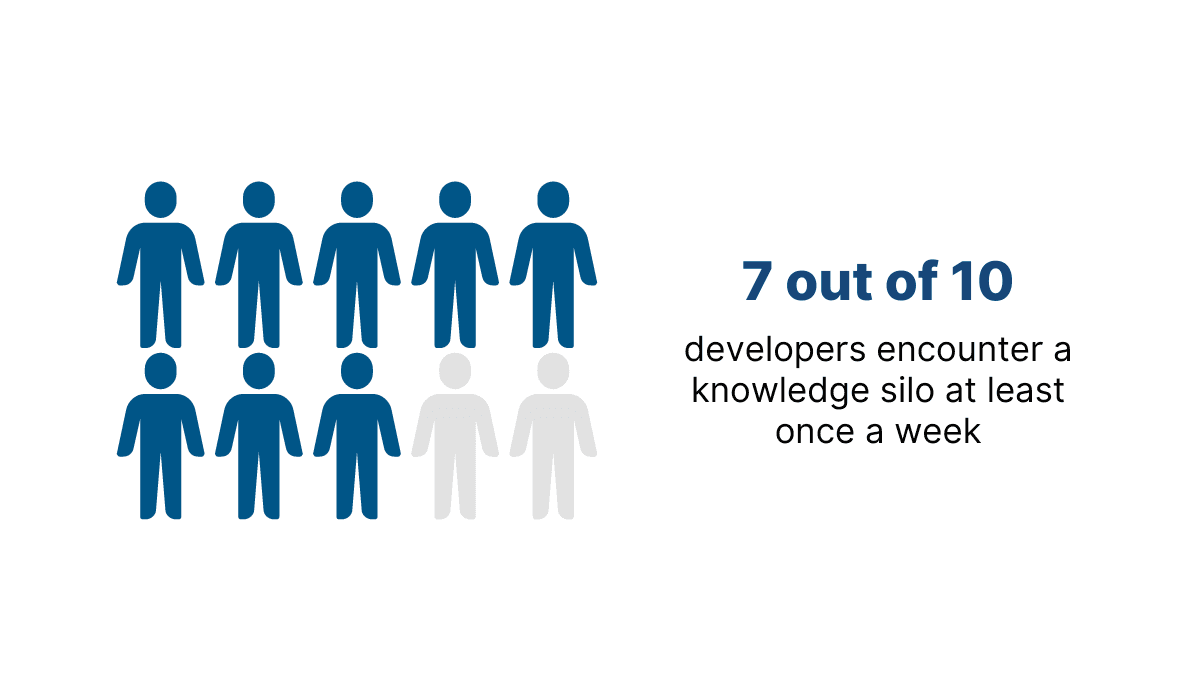
Illustration: Archbee / Data: Stack Overflow
Fortunately, having high-quality developer documentation can spare your developers the hassle that knowledge silos can bring.
They have all the information in one place and don’t rely on other sources, departments, or individuals in the company to provide the data they need.
Let’s look at the example of Docker developer documentation.
Docker is a complex software product, so developer documentation needs to be detailed and extensive. And it certainly is, as you can see just by looking at the categories it contains.

Source: Docker
It has information for users of every level of experience.
For beginners, there’s the “Get started” section and instructions for download and installation.
On the other hand, developers that have already acquired some knowledge about the product can learn about APIs, Command-line interfaces, etc.
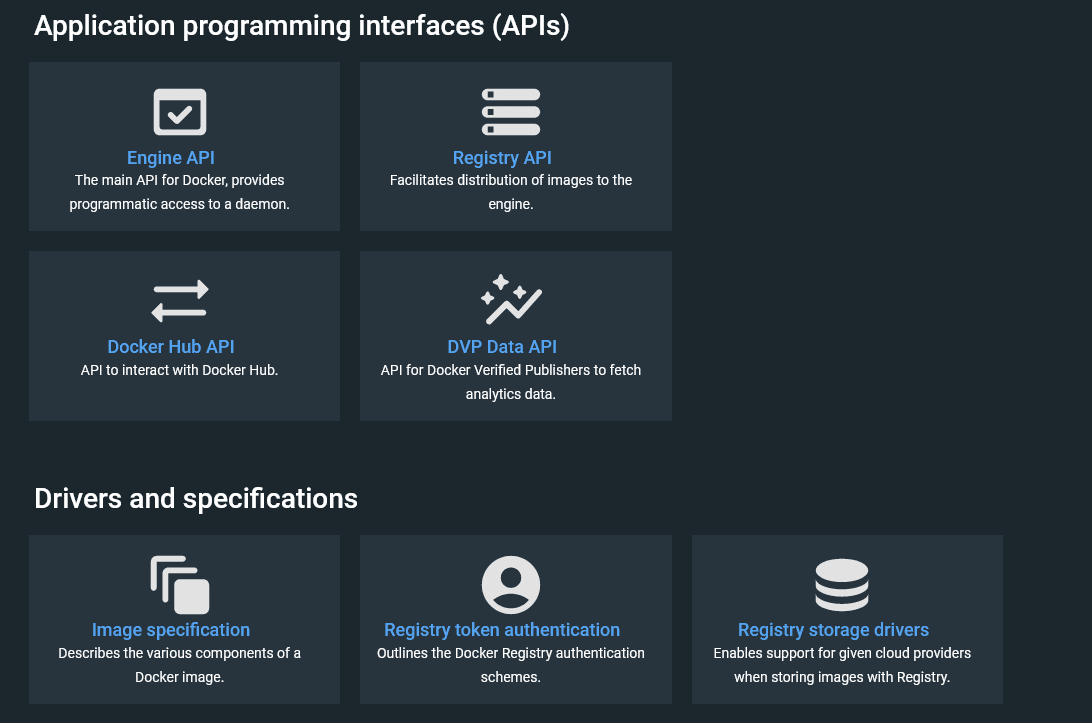
Source: Docker
The point is that all of the information about the product, from the basic instructions to the complex guidelines, is in one place—easy to find, accessible, and always there when you need it.
Making Developers More Productive
Software development isn’t just writing code. Developers have many tasks they need to juggle on a daily basis, and it isn’t easy to always be productive in those circumstances.
Coding, solving problems and bugs, collaborating with other developers and employees, attending meetings, handling pull requests, and working on documentation are often parts of only one day in the life of a software developer.
Luckily, good developer documentation can help make some of those responsibilities more manageable.
With an up-to-date and comprehensive resource, developers can find out basically anything work-related with a few clicks, making them significantly more productive.
How much more? According to GitHub’s 2021 State of the Octoverse report, sharing information through documentation can boost productivity by 55%.
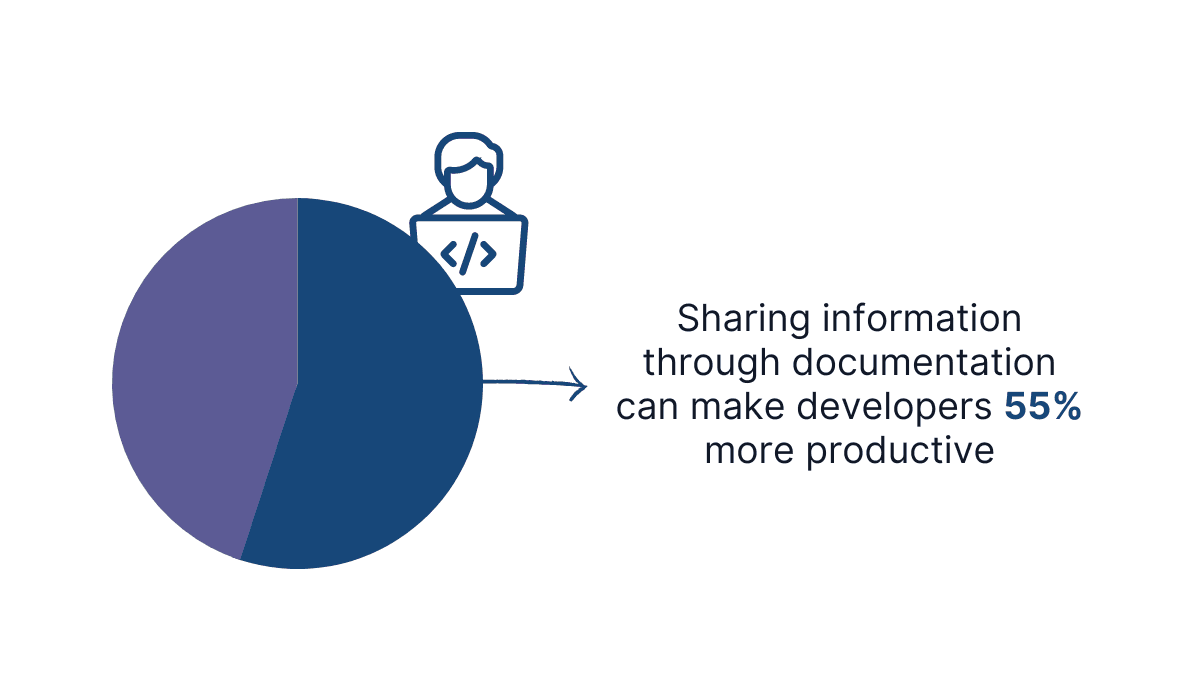
Illustration: Archbee / Data: GitHub
If you think about it, it’s perfectly logical why documentation positively impacts productivity.
Instead of spending time trying to figure out how to integrate a particular API or writing code that someone already wrote a week ago, a developer can get all the answers and information in the documentation.
Therefore, they can spend more time on meaningful work and produce better results in less time.
Michaël Chemani, senior software engineer at Shopify, explains the importance of documentation for productivity in his blog post.
As he points out, sharing knowledge in documentation is one of the most important things in tech companies.
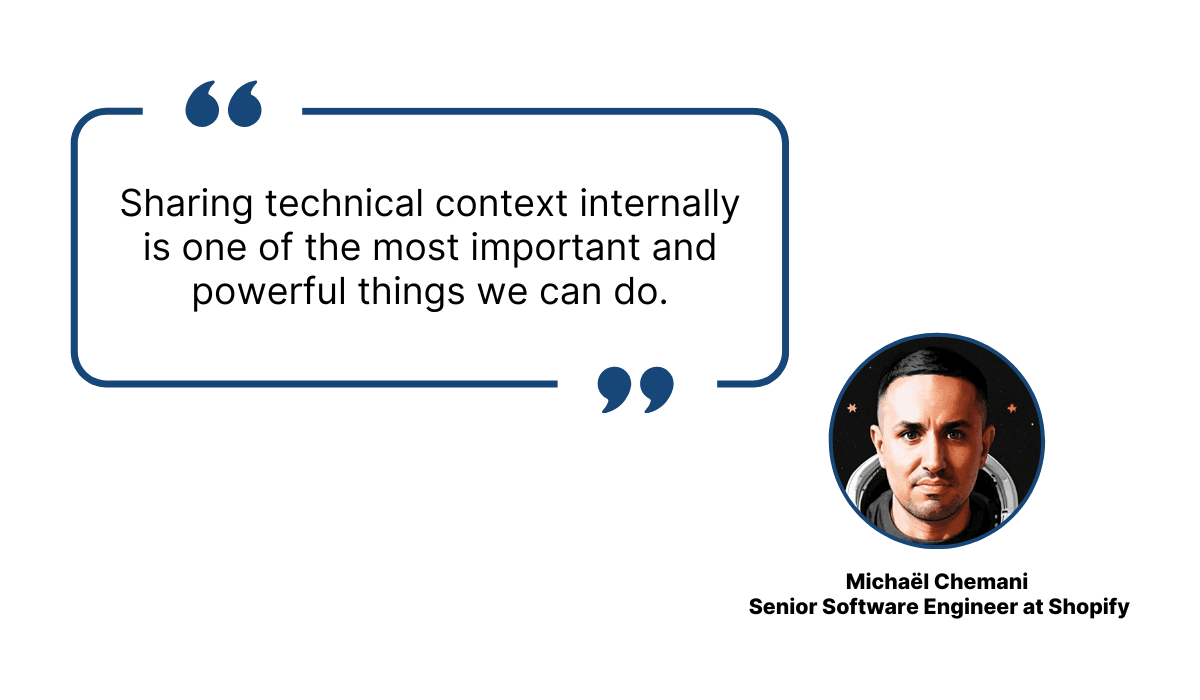
Illustration: Archbee / Data: Shopify
In other words, developers can be more productive when they have easy access to the content they need. And documentation offers them that easy access.
Many types of documentation can help developers that way, but let’s look at one of the essential ones—a README file.
A README file usually contains information about what the project or software does and why it is useful.
Moreover, it provides help to other developers on how to start working with it, where to find help, and other essential information they need to be productive.
For example, take a look at the contents of the README file for ArrayMixer.

Source: GitHub
It’s a detailed document in which a user can find out a lot of information, including instructions on how to install the program and examples of its use.
Documentation like that can efficiently give developers the knowledge they need to increase their productivity.
Onboarding New Developers
Your developer team won’t stay the same forever—people will come and go. You are most likely well aware of that, but it doesn’t hurt to remind yourself occasionally.
One of the reasons it’s good to keep that in mind is because it can encourage you to prepare all the necessary documentation for onboarding new developers.
Integrating new developers into an existing team can be stressful, time-consuming, and an all-around daunting task with all the new knowledge, practices, tools, and other factors they need to learn and adopt.
So, why not make the onboarding process as smooth as possible by providing new hires with helpful documentation?
Alexander Heinle, head of marketing at Zavvy, is also a strong proponent of giving new developers much-needed materials.
New developers need technical documentation to determine the best practices and eliminate pain points related to your project.
After all, documentation is most likely one of the first things new developers look for when starting work at a new company or on a new project.
For instance, outdated documentation it’s the number one challenge when onboarding a developer, according to a Twitter poll by Erica Heidi, who is a software engineer and author.

Source: Twitter
Therefore, providing high-quality documentation to new developers is doubly important.
Your team, and by extension, your company, profits from new hires catching on quickly and adopting the way the rest of the developers work.
At the same time, new developers get the resources they need to learn at their own pace and become valuable assets to the team.
But what kind of documentation do you need for successful onboarding? Alexander Heinle from Zavvy, whom we’ve quoted earlier, recommends the following:
- Source code and database
- Project dependencies
- API keys and credentials for the tools
- Sample data
- Deployment credentials
For example, Stripe provides API keys to developers, including a secret API key for the test mode.
However, that wouldn’t mean much to new developers if they didn’t know how to obtain it.
That’s why Stripe provides them with simple instructions.
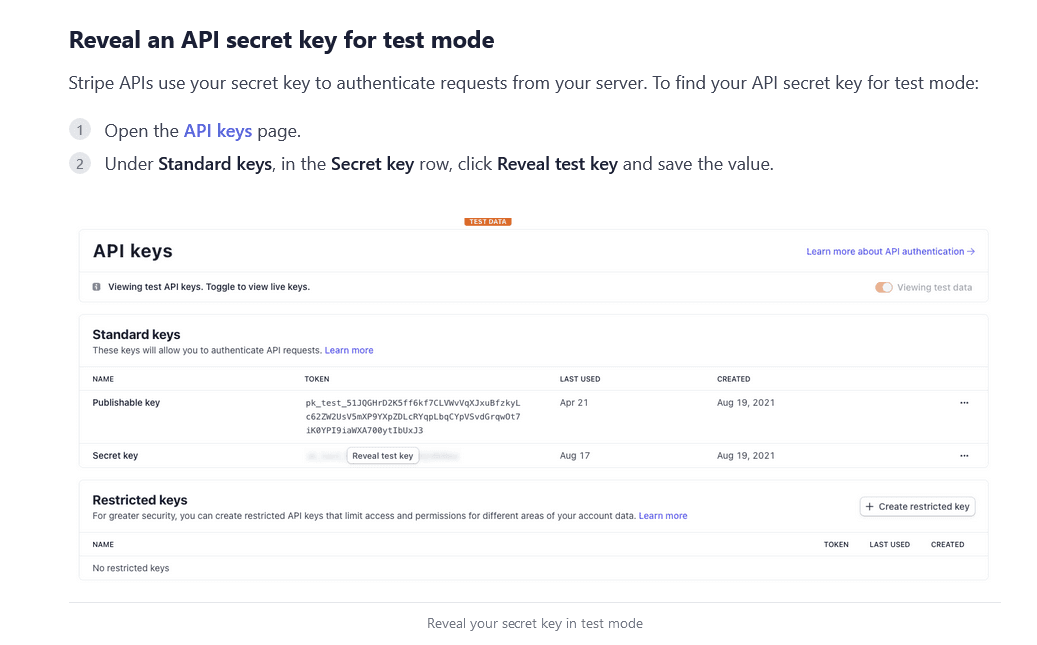
Source: Stripe
Onboarding documentation like that is vital for the efficiency of new developers.
Without it, they would waste a lot of time getting up to speed with the rest of the development team, which would inevitably negatively affect their performance.
Educating the Software’s End Users
New developers aren’t the only ones that need educational resources about the software product.
Documentation is also vital for the end users and their success using the software.
Every user, be it a layperson or an experienced developer, wants to learn about the product from somewhere, and documentation is a convenient and always accessible resource.
And while regular users can benefit from the product documentation, how-to guides, product walkthroughs, etc., if your end users are developers, they have different needs.
Developers need more technical documentation like, for instance, API references, language-specific guides, and code samples.
Let’s examine how GitLab, a well-known open-source software development platform, educates its users.
If you’re a developer who wants to develop with GitLab, you’re in luck because they went above and beyond with their content.
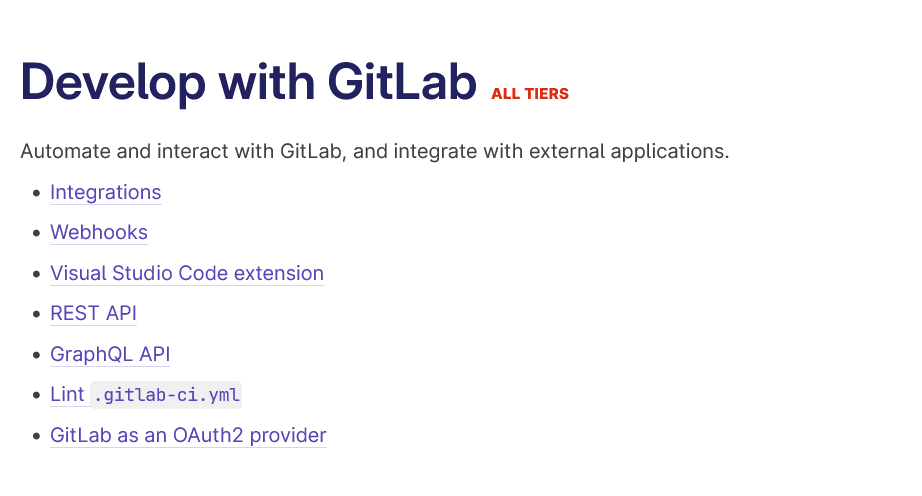
Source: GitLab
For example, whichever of the categories above you choose, there’s a treasure trove of information in it.
Take a look at the highlighted table of contents on the right-hand side of the REST API documentation you can see below:
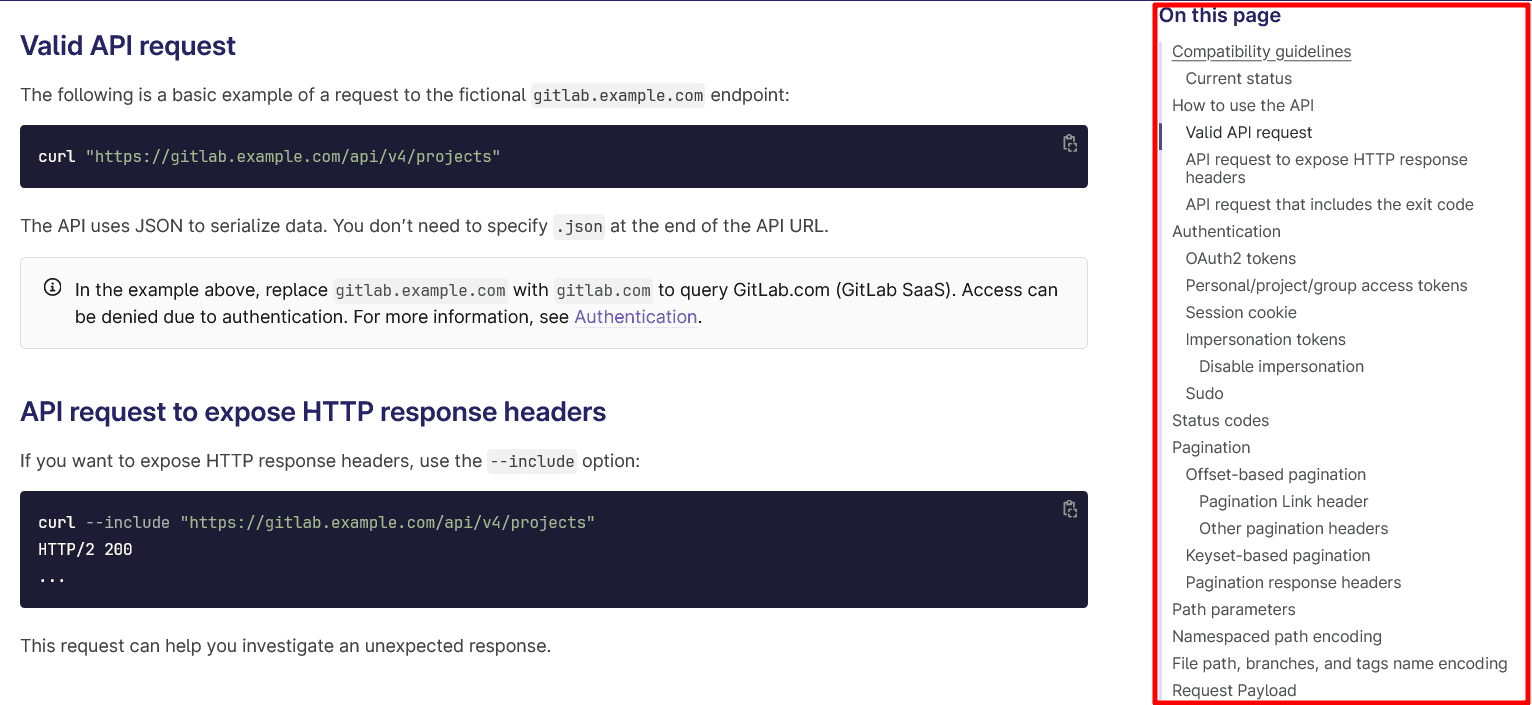
Source: GitLab
It’s clear that there’s a lot of information on that page—and the whole table of contents didn’t even fit in that screenshot.
The point is that most of your end users need detailed and specific information.
You can offer them that by using a documentation tool that’s tailored for creating, publishing, and maintaining developer documentation.
If you’re looking for just such a tool, Archbee is a great choice.
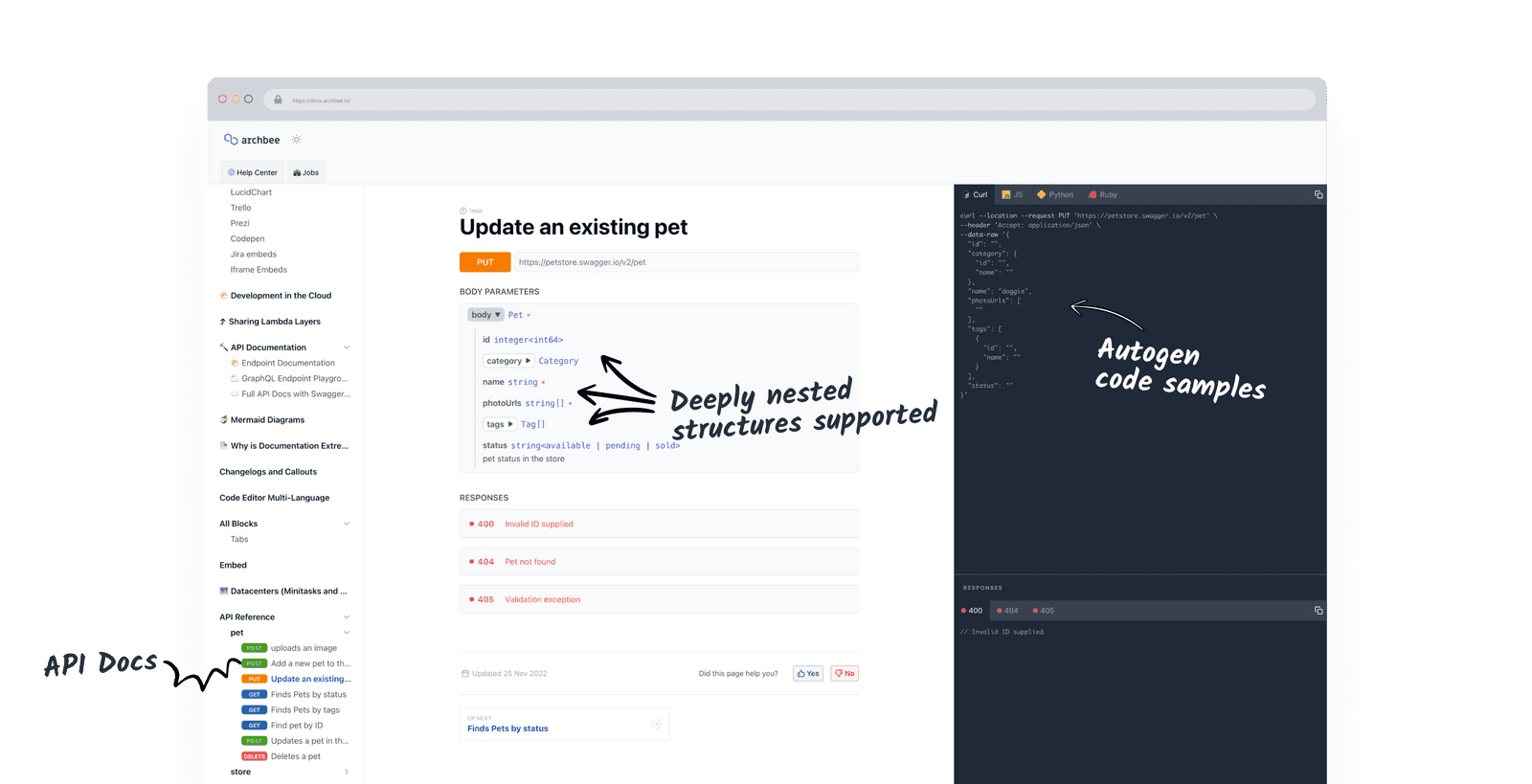
Source: Archbee
For instance, Archbee makes writing API references easier—it automatically generates them for you.
You simply need to upload an API definition file, and Archbee will handle the rest.
Furthermore, Archbee has customizable blocks for creating documentation. With an API block, you can describe APIs in detail, educating your end-users.
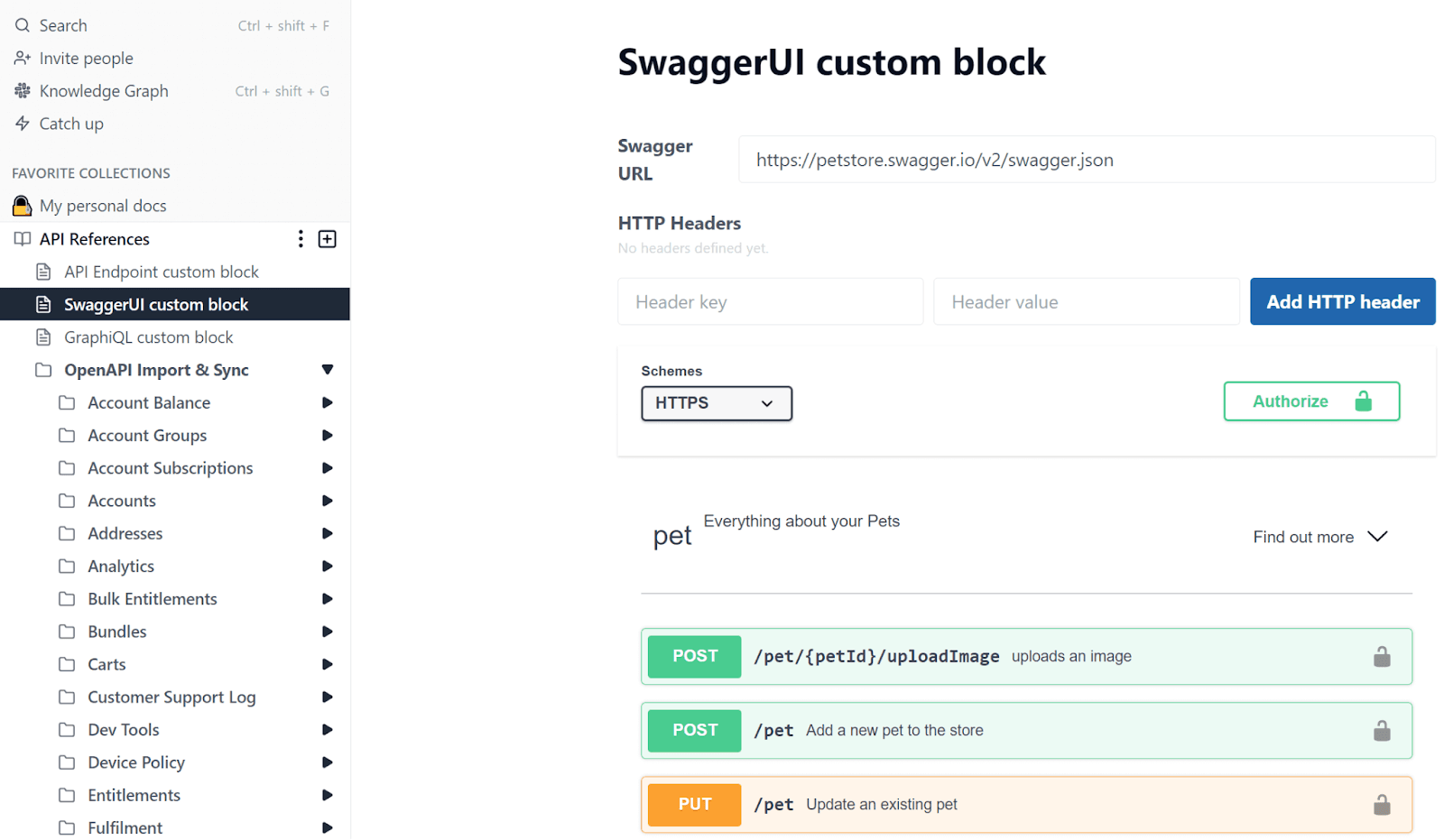
Source: Archbee
With a robust documentation tool, you can create excellent developer documentation.
And developer documentation is the ultimate educational tool for your end users. Don’t miss out on all of its benefits.
Conclusion
To sum up, good developer documentation is not just a “nice-to-have” part of a software project.
Developer documentation is essential, and we hope the reasons we’ve explained in this article have convinced you of that fact.
Investing in good documentation early on can pay off in the long run, saving time and resources while improving the overall quality.
If you take developer documentation seriously, you’ll reap the benefits in no time.
Try Archbee's full range of features and how it can help you with your developer documentation with our free 14-day trial.
Frequently Asked Questions
Great developer documentation turns tribal knowledge into a clear, searchable, always-available guide. It explains what the system does, how to use it, and why decisions were made, so developers spend less time guessing and more time shipping. Key benefits: - Fewer errors and less rework - Faster onboarding and smoother handoffs - Alignment around a single source of truth - Better developer experience for customers and partners - Business continuity when people or priorities change What good looks like: up-to-date, task-focused guides; API references with code samples; architecture and decision rationale; troubleshooting/runbooks; and versioning with clear change history.



